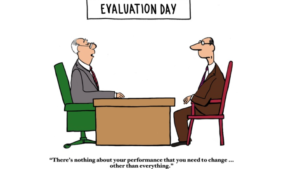According to the job-matching service, TheLadders, most hiring managers spend an average of 6 seconds looking at a resume before making a decision. That’s 6 seconds to ascertain whether or not a candidate is worth spending the time to interview.
Six seconds isn’t a long time.
In reality, most hiring managers have an idea of who they want in their head long before they begin looking at those resumes. They know what they are looking for as they review those pieces of paper in front of them. But the problem is, that certainty can sometimes be a bad thing – and can occasionally discount a good candidate who may not have the exact experience they are looking for, but who absolutely has the ability to thrive if given the chance.
So instead of specific job titles or a list of duties you know apply to this current opening, here are the real priorities you should be focusing on when reviewing resumes:
- Must Haves: Yes, you have the picture of your perfect employee already in your head. You may even have a long list of all the attributes that employee should embody already written out. But it’s time shorten that list and expand your vision. You don’t want to so limit yourself that you miss out on someone who could be the perfect employee. Instead, whittle that list down to your “must-haves.” Does the position actually require a degree? And is 5 to 10 years’ experience really necessary, or would 2 do – as long as it is the right type of experience? Think about the things you absolutely can’t budge on. The shorter that list, the easier it will be to spot those items (or realize they are lacking) as you peruse resumes.
- Loyalty: The millennial generation, especially, has a way of job-hopping, and that diversified experience and passion can absolutely be a good thing. So you don’t want to automatically discount someone for having held a few different jobs at a few different organizations – but if their resume has them changing up positions every few months, and they aren’t short-term contract positions that would otherwise account for that many moves; it’s worth paying attention to. Just as it can be a good sign to find a candidate who has a history of moving up the ladder and who has held multiple positions within the same organization in the past.
- Prove Its: Anyone can list out what their former job duties were. You could find that information by pulling up a job description yourself. Instead, what you want to look for on a resume is the information that proves this candidate was actually good at the job they held. Look for mentions of accommodations and specific circumstances in which they excelled. These prove its will tell you far more than a generic list of duties ever could, and finding them on a resume means you have a candidate who knows how to present the right information at the right time – a valuable quality for any future employee to have.
|





